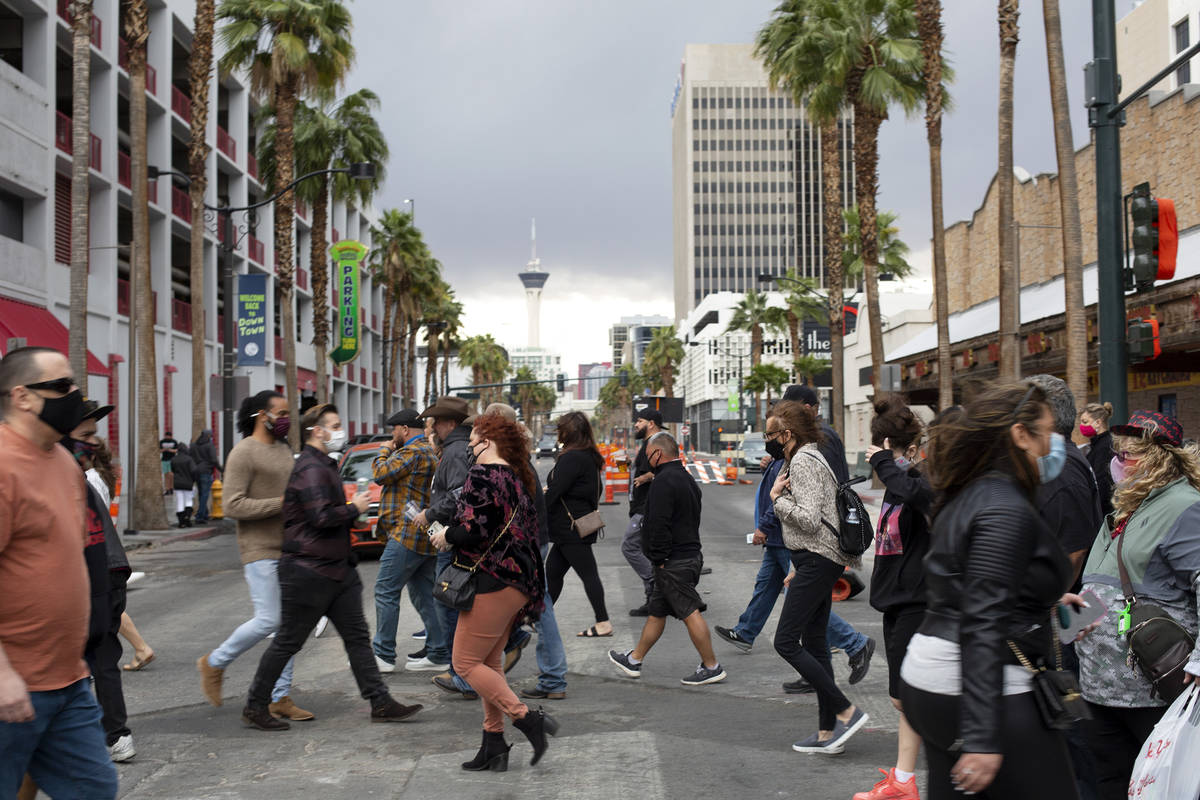COVID vaccination increase should boost Las Vegas visitation numbers

Room and occupancy rates for Southern Nevada’s resorts are improving, boosting visitation by 18.9 percent over January totals, the Las Vegas Convention and Visitors Authority reported Thursday.
Total occupancy was calculated at 42 percent — 10.4 percentage points better than in January but still 44.8 points off the total in February 2020.
The increase in visitation to 1.54 million people was still 53.8 percent below year-ago figures, which benefited by having an extra day because 2020 was a leap year.
The convention authority calculated weekend occupancy at 62.8 percent for the month, 32.1 percent at midweek, 41.5 percent on the Strip and 37.1 percent in downtown Las Vegas.
The average daily room rate increased 8.1 percent from January to $98.03 but was still 25.8 percent lower than what it was a year ago.
Kevin Bagger, vice president of the LVCVA research center, said room and occupancy rates should get better with vaccinations increasing daily.
“Although less than half of prior-year levels, February’s visitor tally of approximately 1.54 million visitors reflected a welcome month-over-month of 18.9 percent over January 2021 as the vaccine rollout and continued protocols helped control the COVID spikes that emerged in December and January,” Bagger said.
The LVCVA also reported there were no convention visitors in February, a situation that should change in March or April as limitations on the meeting of large groups is relaxed.
March and April traditionally are among the best convention months with multiple small shows occupying the Las Vegas Convention Center in March and the massive National Association of Broadcasters trade show in April.
Another tourism indicator that shows how visitation has been affected by the pandemic is in the average daily auto traffic on highways leading into Las Vegas.
On all major highways, the Nevada Department of Transportation reported an average 108,196 vehicles per day arriving in Las Vegas — 38,838 counted at the California-Nevada border on Interstate 15. That is a 1.4 percent increase year over year from February 2020 and a 2.3 percent increase on all major highways and a 9.2 percent increase on I-15 from January’s totals.
The Department of Transportation doesn’t differentiate between tourist traffic and local traffic.
Contact Richard N. Velotta at rvelotta@reviewjournal.com or 702-477-3893. Follow @RickVelotta on Twitter.